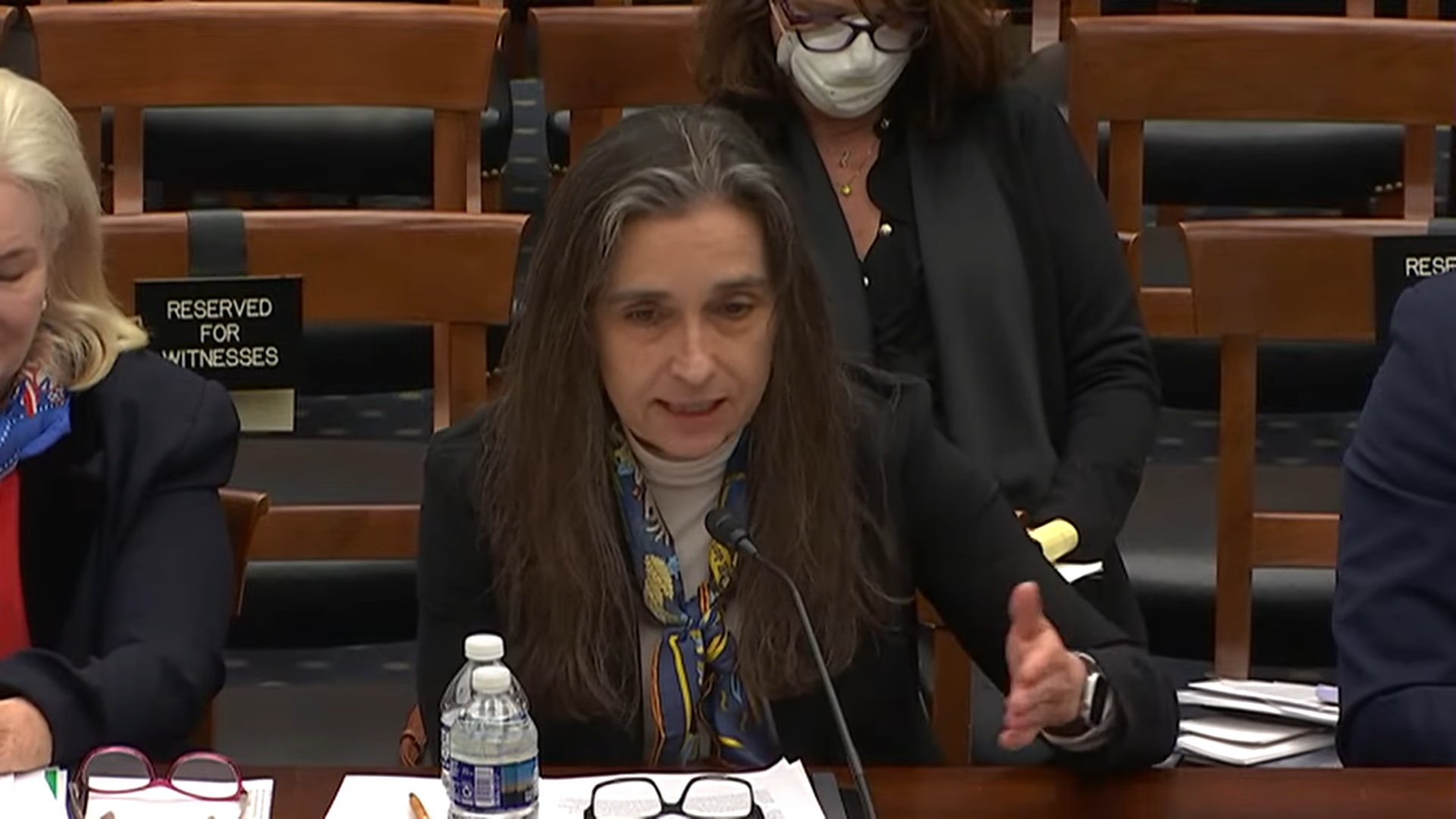
The technology that powers the Lawrence Livermore National Laboratory’s main nuclear-weapon testing center is a viable bedrock for a nuclear fusion power plant, the lab’s director testified Tuesday in Congress.
Based on data available today from Livermore’s National Ignition Facility (NIF), “it is feasible to develop a fusion energy power plant based on the inertial fusion energy approach that could be commercially viable,” Kimberly Budil, director of the Lawrence Livermore National Laboratory told the House Science Space and Technology Committee in a morning hearing.
Budil made the assertion in answer to a question from Rep. Jamaal Bowman (D-N.Y.), a two-term congressman from a New York district that runs from the northern reaches of the city borough of the Bronx to the Connecticut border.
“Fusion ignition! Like, wow!” Bowman said during Monday’s hearing, in which he thanked Budil for her “incredible leadership throughout your entire life focusing on this issue.”
Bowman then asked Budil to “talk about and summarize for us what this accomplishment could mean specifically for our clean energy future.”
“It never gets old to hear people say ‘ignition!’” Budil said, before admitting that “[t]here’s a lot of work to be done” before anyone could build a nuclear-fusion power plant.
About a month before Monday’s hearing, the Livermore scientist in charge of nuclear weapon design and physics at the lab, whose team frequently uses the NIF for weapons experiments, put it differently.
“We’re not anywhere near a power plant,” Mark Herrmann, program director for weapon physics and design, said in a video conference hosted by Washington-based nonprofit the Advanced Nuclear Weapons Alliance.
Herrmann’s team does about 20 high-yield experiments a year on NIF. Essentially, the experiments involve blasting tiny pellets capable of achieving fusion with a massive bank of lasers.
In one such NIF experiment, which took place on Dec. 5 and was designed to simulate the effects of an enemy strike on a nuclear-weapon passing through space, the pellet, also called a target, exploded with more energy than the lasers put into it.
But the lasers in the Dec. 5 experiment had to be charged up with 300 megajoules of energy from the electricity grid in order to blast the target with just over two megajoules of energy, which in turn caused a fusion explosion that yielded a little more than three megajoules of energy, Herrmann said.
“The way a power plant would work is, you would have to inject targets and hit them with a laser with a repetition rate of about 10 times a second,” Herrmann said during January’s virtual event.
NIF has conducted roughly 4,000 experiments since opening in 2009, according to Livermore. There are 86,400 seconds in every 24-hour day.
Also, said Herrmann, “[y]ou would have to have a laser that’s much more efficient than the NIF. Maybe 10% efficient. Our laser’s about a little bit less than 1% efficient. Lasers like that do exist but nothing at the scale of the NIF.”
In an omnibus federal budget passed in December Congress appropriated $380 million for the National Ignition Facility, a $30 million increase compared with 2022. For target fabrication, the NNSA got a $35 million appropriation for 2023, up $2 million from 2022.